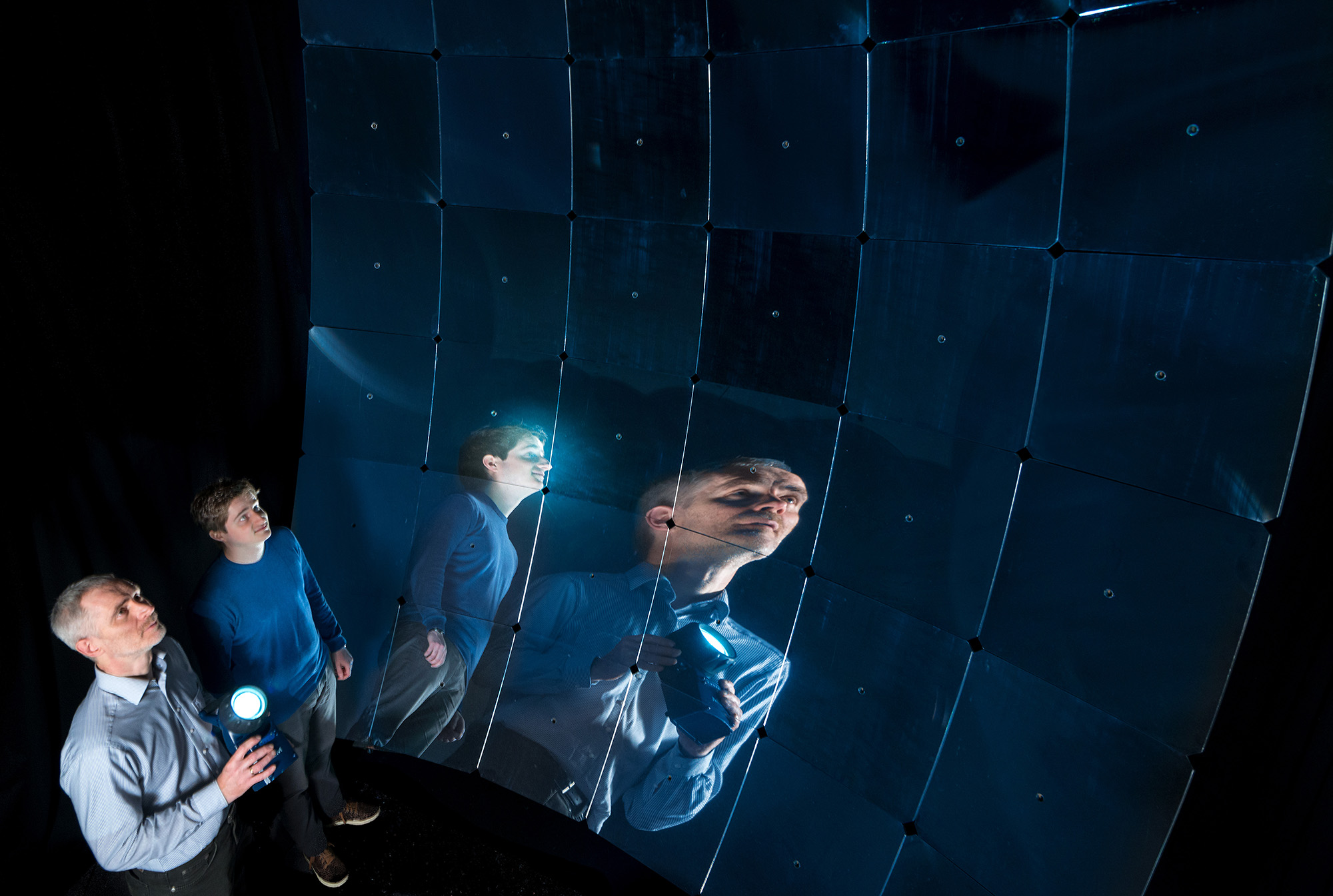Elementary Particle and Astroparticle Physics
What do neutrinos, the so-called ghost particles, weigh? What emits the energy-richest particles of the universe? Black holes? Neutron stars? Active galactic nuclei? And how is the universe structured? Such questions are studied by KIT scientists conducting experimental and theoretical research at the interface of astrophysics, elementary particle physics, and cosmology and the corresponding academic education. This also includes large international collaboration in fundamental research. KATRIN, for example, weighs neutrinos, the most abundant massive particles of the universe. The Pierre Auger Observatory is searching for the highest-energy component of cosmic rays.
Research Focus
Elementary Particle and Astroparticle Physics
![]()
Elementary Particle and Astroparticle Physics, as well as related high technologies, have long been among KIT’s particular strengths. Our research spans both experimental and theoretical domains, ranging from fundamental research to the development of complex technologies. Key areas of focus include collider and flavor physics, high-energy cosmic rays, neutrino properties, and the search for dark matter. We are also pioneering novel and sustainable concepts for detectors and accelerators, extending to complex, integrated systems.
KIT is home to several world-class research infrastructures such as the GridKa Data and Computing Center, the Karlsruhe Research Accelerator KARA, and the KATRIN experiment. These facilities provide a strong foundation for excellent research and foster international collaborations in one of the most dynamic fields of modern physics. A recent highlight is the KATRIN experiment’s achievement in setting a new upper limit of 0.45 eV/c² for the neutrino mass. Moreover, KIT researchers play leading roles in major international collaborations, including the CMS Experiment at CERN’s Large Hadron Collider and the Pierre Auger Observatory in Argentina.
Research Highlights
KIT is involved in many international large-scale experiments for physical fundamental research. In the Argentinian pampa, the Pierre Auger Observatory covering an area of 3000 square kilometers measures the highest-energy component of cosmic rays, i.e. elementary particles that come from the universe and hit the Earth and sometimes have incredibly high energies, millions more than particle accelerators on Earth.
KIT is also involved in the most powerful particle accelerators on Earth: At the Large Hadron Collider of CERN in Geneva, reactions that took place shortly after the Big Bang are simulated.
Research at KIT also focuses on neutrinos: With the most precise scales of the world, the KATRIN experiment on KIT’s Campus North, the rest mass of neutrinos is to be measured. And the IceCube Observatory at the South Pole measures neutrinos of highest energies from space.


